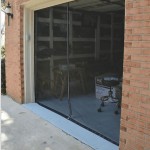Building Living Space in a Garage: A Guide for Oregon Homeowners
The rising cost of housing and the desire for more functional living space have fueled a growing trend: converting garages into habitable areas. For Oregon homeowners, transforming a garage into an office, guest room, or even a small apartment can be an attractive solution. However, such a project requires careful planning and adherence to local building codes, particularly concerning garage doors in Oregon.
This article provides a comprehensive overview of the factors to consider when converting a garage into living space, with a particular focus on the implications for garage doors and overall structural integrity. It outlines the necessary steps, regulations, and potential challenges involved in this type of home improvement project.
Understanding Oregon Building Codes and Permitting
Before embarking on a garage conversion, it is crucial to thoroughly research and understand Oregon's building codes and permitting requirements. Municipalities across the state have specific regulations regarding structural modifications, electrical work, plumbing, and fire safety. These codes are designed to ensure the safety and habitability of the new living space.
Obtaining the necessary permits is not merely a formality; it is a legal requirement. Working without permits can result in hefty fines, forced demolition of unapproved work, and difficulties selling the property in the future. The permitting process typically involves submitting detailed plans to the local building department, undergoing inspections at various stages of construction, and ensuring that the project meets all applicable codes.
One key aspect to consider is the International Residential Code (IRC), which is widely adopted throughout Oregon. This code addresses various elements of residential construction, including insulation requirements, ventilation, egress windows, and smoke detectors. These regulations significantly impact the design and construction of a garage conversion.
Furthermore, it's essential to check with the homeowner's association (HOA), if applicable. HOAs often have rules regarding exterior modifications and changes to the property's appearance. These rules may restrict the type of conversion allowed or require specific design elements to maintain neighborhood aesthetics.
When it comes to garage doors in Oregon, building codes stipulate that if the garage door opening is being closed off to create a wall, specific structural requirements must be met. This includes proper framing, insulation, and weatherproofing to ensure the new wall is structurally sound and energy-efficient. If the garage door is being retained, it must still meet safety standards and potentially be reinforced to prevent unauthorized entry.
Addressing Structural and Environmental Considerations
Converting a garage into living space involves addressing several structural and environmental considerations to create a comfortable and safe environment. Garages are typically not designed to be living spaces, and therefore require significant upgrades to meet habitability standards.
One primary concern is flooring. Garage floors are typically concrete slabs that are cold, uneven, and prone to moisture. Installing a proper subfloor, insulation, and a finished flooring material is essential for creating a comfortable and energy-efficient space. Options include engineered hardwood, laminate, tile, or carpet, depending on the intended use of the room.
Insulation is another crucial factor. Garages are usually poorly insulated, leading to significant heat loss in the winter and excessive heat gain in the summer. Insulating the walls, ceiling, and floor is necessary to maintain a comfortable temperature and reduce energy costs. Building codes specify minimum R-values for insulation depending on the climate zone. Oregon has varying climate zones so be sure to consult with the local authority for the correct requirements.
Ventilation is also vital to prevent moisture buildup and ensure good air quality. Proper ventilation can be achieved through natural ventilation (windows and doors) or mechanical ventilation (exhaust fans or a whole-house ventilation system). Building codes require adequate ventilation to prevent condensation and mold growth.
Termite and pest control are important considerations, particularly in Oregon's damp climate. Garages are often susceptible to pest infestations, and steps should be taken to prevent them from entering the new living space. This may involve sealing cracks and crevices, installing pest-resistant barriers, and regularly inspecting the area for signs of infestation.
Addressing the garage door opening is a critical aspect of the conversion. If the garage door is being removed, the opening must be properly framed and filled with a wall that meets structural and insulation requirements. If the garage door is being retained, it must be properly sealed and insulated to prevent drafts and heat loss. Depending on the conversion plans, the garage door could be replaced with a smaller door and a window to let in natural light while still providing access to the exterior of the house. The key is to ensure the modification complies with the local building codes and aesthetic requirements.
Garage Doors in Oregon: Options and Alternatives During Conversion
When converting a garage, homeowners have several options regarding the existing garage door. The chosen approach must comply with building codes and suit the needs of the new living space. Retaining, removing, or modifying the garage door all have implications for the design and functionality of the converted space.
One option is to completely remove the garage door and replace it with a standard wall. This approach is often preferred when the garage is being converted into a permanent living space, such as a bedroom or office. Replacing the garage door with a wall provides better insulation, security, and soundproofing. The new wall should be properly framed, insulated, and finished to match the existing walls of the house. This is the most common approach to maintaining the internal temperature of the new room.
Another option is to keep the garage door in place while still creating a functional living space. This approach may be suitable if the homeowner wants to retain the option of using the space as a garage in the future or if they want to maintain the original appearance of the house. In this case, the garage door should be properly insulated and sealed to prevent drafts and heat loss. Insulation can be added to the back of the door, and weatherstripping can be installed around the perimeter to create a tight seal. However, this option often requires additional insulation to the other walls and ceiling to make the temperature comfortable.
A third option is to replace the existing garage door with a different type of door, such as a glass patio door or a smaller door with a window. This approach can provide more natural light and ventilation while still maintaining a connection to the outdoors. Glass doors can create a more inviting and comfortable living space. This will usually require adding infill panels above or to the side of the new door because most standard doors are shorter than the original garage door.
Regardless of the chosen approach, it is essential to ensure that the garage door or the replacement wall meets all applicable building codes. This includes requirements for insulation, fire safety, and structural integrity. Consulting with a qualified contractor or architect is recommended to ensure that the conversion is done safely and correctly.
Addressing the garage door track and opener is another consideration. If the garage door is being removed, the track and opener should be removed as well. If the garage door is being retained, the homeowner may choose to keep the opener for convenience or remove it to save space. If keeping the garage door operational, ensure the opener has all modern safety features such as obstruction detection and automatic reversal.
Ultimately, the decision of what to do with the garage door depends on the homeowner's specific needs and preferences. Carefully weighing the advantages and disadvantages of each option is essential to ensure that the conversion creates a functional and comfortable living space.
By carefully considering these factors and adhering to local building codes, Oregon homeowners can successfully convert their garages into valuable living spaces. This process requires careful planning and execution, but the potential benefits—increased living space and enhanced property value—can make it a worthwhile investment.

Converting A Garage Into Additional Living Space 3rs

Not Just For The Garage

Avante Aluminum Garage Doors Central Oregon Blankenship

50x60x14 Metal Building With Living Space

How Much Does A Garage Conversion Cost 2024 Guide

That Garage Door Is Perfect Barndominium Barndominiumliving Barndo Barndominiums Barndoenvy Garagedoor Credit The Company

Avante Aluminum Garage Doors Central Oregon Blankenship

Living Spaces Steel Structures America

Avante Aluminum Garage Doors Central Oregon Blankenship

Not Just For The Garage
Related Posts








